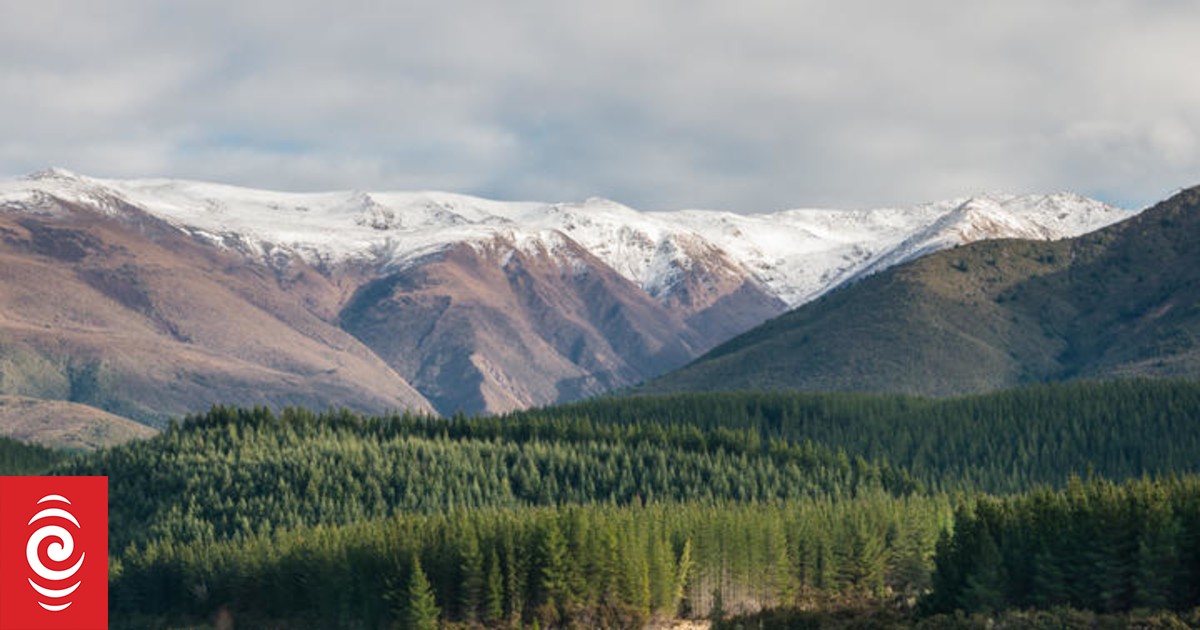Photo: Supplied
The Climate Change Commission this week got stuck into the current settings of the Emissions Trading Scheme.
Commissioner Rod Carr said as it stood it was a “threat” to achieving our targets to slash damaging gases.
Here’s what you need to know:
What is the ETS again?
The scheme is a government-run market where polluters buy credits to emit.
People can plant forests then sell the credits generated on the scheme.
It is supposed to be an integral tool to get to net zero emissions by 2050.
The idea being that prices rise over time incentivising firms to innovate and pollute less.
New Zealand’s Emissions Trading Scheme does not differentiate between reducing emissions, ie not emitting the gas in the first place, and reductions from trees absorbing and storing carbon.
We are the only country that allows limitless tree planting in its ETS.
What’s wrong with it
In a report this week the Climate Change Commission took aim at the current ETS settings, saying it makes the country far too reliant on planting trees instead of making real cuts to emissions.

Illustrated example of how continued high afforestation rates could undermine gross emissions reductions.
Photo: Supplied / Climate Change Commission
The report said we are on track for large swathes of land being planted out, “allowing gross emissions to continue largely unabated”.
It is cheaper to plant trees than take most other steps to reduce actual emissions.
The report said growing pine can cost between $25 and $50 per tonne of carbon dioxide equivalent, when “many opportunities to reduce gross long-lived gas emissions cost upwards of $100 per tonne”.
The price of carbon is already having an effect – the estimated amount of exotic forestry planted last year was 60,000 hectares, double what had been projected.
Meanwhile, the price of carbon has plummeted recently after the government ignored the commission advice regarding the ETS late last year.
Boom and bust
The report warned that mass planting will eventually lead to huge amounts of credits coming onto the market, which would force prices way down.
Ultimately by 2037 the ETS could cease being a useful tool to drive emissions reductions – the price of carbon will be too low and will no longer be an incentive for polluters to change practices.
We would still get to “net zero” emissions, but would still be burning fossil fuels, and having to keep planting ever more trees to offset previous and future emissions.
There has also been outcry from rural communities about the economic and social impact of converting large swaths of land used for sheep and beef farming land forestry.
The current trajectory means the country would miss the opportunity to develop and deploy new technologies early for which the international market will pay a premium for.
It could also be bad for forest owners as they may not get the return on investment they were banking on when the trees were first planted.
And it will mean there is no incentive to keep planting the trees needed to offset the difficult-to-avoid emissions. For example, from some industrial processes.
Not all carbon is the same

Illustration showing the difference between fossil carbon and land carbon.
Photo: Supplied / Climate Change Commission
The report describes how the 2050 target does not distinguish between gross emissions reductions and carbon removals, despite them not being equivalent.
It says the timeframes are inconsistent.
“The carbon stored in fossil fuels has been locked away deep underground for millions of years.
“When fossil fuels are burnt, this carbon is released to the atmosphere and adds to the “active” carbon cycle – the continual exchange between the atmosphere, land, and ocean.
“Fully reversing this process takes hundreds of thousands of years. The addition of fossil carbon into the atmosphere is therefore effectively permanent on human timescales.”
Trees can be cut down, damaged in storms by fire or by pests, and the carbon then released again.
Govt should add a ‘gross’ target
The commission says the purpose of the ETS needed to shift to driving gross reductions, not just net (once the benefit of tree planting has been subtracted).
It wants the government to determine a goal for cutting gross emissions, and it has given suggestions for what the levels should be.
Currently there is only a net target – the ledger once the trees are taken into account.
The government is reviewing the ETS settings.
Carbon price drops after Govt balks at cost of living
This all comes after the carbon price dropped considerably.
Government concern about the cost of living saw it late last year reject the commission’s advice to let the price of carbon go up, which caused prices to plummet.
A subsequent ETS auction failed, as bids did not get high enough to trigger the release of units.
It likely is partly a signal that the market is unsure the government is serious about its plans to cut emissions.
The commission said the government should use policy levers like the Winter Energy Payment and welfare to support people to deal with the increased costs associated with climate action.
Not fiddle with the ETS to keep peoples’ costs down.
Current policies and plans falling far short of reduction targets
The critique of the ETS from the Climate Change Commission came in a report containing its draft advice for how to slash emissions for the second half of the decade – which was released earlier this week.
The report also found that current policies and plans fall short of hitting targets.
Commissioner Rod Carr said they actually only get us halfway to our goals.





















Discussion about this post